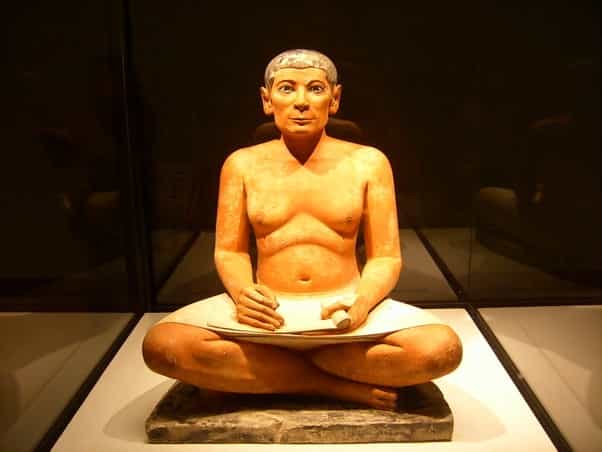All aspects of economic and social life, from the routine of the mansions to the production of the peasantry, were recorded; this need stimulated the development of writing.
While the Sumerians quickly replaced the pictograms with cuneiform characters that formed syllables and words, the ancient Egyptians continued to depend on elaborate characters that represented animals, objects, places, people – and parts of it.
Some of these symbols designated things or ideas; others identified sounds.
Elegant, but uncomfortable to use, such formal hieroglyphs have been used, throughout the history of dynastic Egypt, in inscriptions of monuments.
However, a more condensed and cursive style was soon adopted for everyday notes, facilitating the task of the scribes.
The spread of ancient Egyptian writing was greatly stimulated by another gift from the Nile: the tall papyrus plants, abundant in the wet lands of the delta.
The scribes depended on the papyrus to exercise their craft: as early as 3100 BC the plant was harvested on the banks of the Nile.
The flat strips of the papyrus stalk were arranged in two layers, at right angles to each other; the strips were then moistened and then beaten until they became a writing surface similar to parchment.
Light, transportable, easy to store and very durable, papyrus was much more practical than the clay plates of the Sumerians. Produced only in ancient Egypt, it would for a long time be one of the country’s main export items.

In the beginning, writing was used mainly to list the names of the pharaohs and record the important events of their reigns.
But as bureaucracy grew, literate men became essential to the conduct of government business.
The class of scribes
“It’s the writing that you should focus on,” said an employee to his son. To follow his father’s guidance, the boy would have to enroll in a school of scribes.
There he would study from dawn to sunset, for twelve or more years, using his palette with black paint, reed brushes and an erasing stone, to perfect his knowledge of about seven hundred signs.
He would copy endlessly tedious everyday formulas – a list of articles from a warehouse, perhaps, or the greeting in a letter: “May you prosper, May you live”.
School discipline for scribes was inspired by the proverb: “A boy’s ears are on his back”. However, discipline and punishment were worth bearing in mind, for being a scribe was one of the few means of ascension in that rigidly stratified society.
During the reign of Amenemhat III, in the 19th century BC, a royal scribe who had the same name as Pharaoh became vizier and was rewarded with his own funerary monument.






